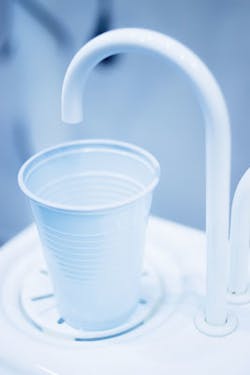The role of pH: Implementing a pH protocol helps dental patients focus on demineralization
By Amber Auger, RDH, MPH
Dental hygienists play a vital role in the promotion of optimal oral health. Providing custom recommendations based on patients’ specific needs and limitations empowers them to achieve the results we clinicians desire. The increase of risk factors such as medication-induced xerostomia, diets high in sugar, and carbonated beverages can leave patients discouraged, perhaps maybe even expecting tooth decay. An unexamined risk factor is the oral pH of a patient, as an acidic oral cavity can allow bacteria to thrive and enamel to demineralize.
The pH scale ranges are an indication of how acidic a substance is, and the scale ranges from 1 to 14, with one on the pH scale being the most acidic, seven neutral, and 14 the most alkaline. Demineralization of enamel begins at 5.5 on the pH scale. Evaluation of a patient’s pH can determine if the patient has an acidic oral environment that is increasing the person’s risk of tooth decay.
Rinsing with water is often recommended to neutralize the pH of the mouth; however, some bottled waters are more acidic than others. Propel Zero (pH of 3.5), Aquafina (pH of 5.5), and Dasani (pH of 5.6) have some of the lowest ranges of pH in bottled waters.1 Bottled waters in the neutral pH range are Fiji (pH of 7.3), Voss and Smartwater (pH of 7.6), and Evian (pH of 7.9).1 Advising your patients to choose bottled waters with a neutral or alkaline pH (such as Trader Joe’s Alkaline Water) will aid in the prevention of tooth decay. Therefore, testing a person’s pH can be an important educational tool and can allow the patient to become more engaged in his or her prevention of gingival disease and tooth decay.
Forward Science’s phID are strips that quantify a patient’s oral pH levels and are easy to implement chairside.3 Each container of phID includes 100 test strips, and these are free for Forward Science’s “ID for Life Members.” The strips allow clinicians to evaluate patients’ oral pH in seconds, which allows clinicians to educate about the link between an acidic oral environment and the increased risk of tooth decay.3 Based on the pH readings, clinicians can recommend homecare products that help balance the pH, as well as products such as xylitol and toothpastes that contain calcium and phosphate.
One limitation of providing the test chairside comes if a patient has just eaten or drank, as the most accurate pH readings are obtained at least two hours after eating and drinking. Therefore, if a patient is high risk and a pH test is called for, the patient should be advised to refrain from eating or drinking two hours prior to the appointment. Additionally, the pH test should be performed prior to providing the prophylaxis or preprocedural rinse. For high-risk patients, implementing a protocol to test their pH levels at home daily will help them support their diet changes. Instruct patients to test their pH levels prior to eating, drinking, or brushing to receive the most accurate readings.
Our role preventive role as dental hygienists should include the evaluation of the patient’s pH. The pH of products we recommend to patients should also be considered, as the pH could be putting the patient at higher risk for decay. Implementing a pH protocol allows patients to better understand their personal risk of tooth decay. Incorporating the use of pH strips is an additional value to recare visits. RDH
Amber Auger, RDH, MPH, is a hygienist with experience in multiple clinical settings, including facilities abroad. Amber obtained a master’s degree in public health from the University of New England and a bachelor’s in dental hygiene from the University of New Haven. She holds a part-time position at an elite dental office in Boston. Amber Auger is a key opinion leader for several dental companies, speaker and published author, and can be contacted at amberaugerrdh.com.
References
- Where is your bottled water on the pH scale? Alkalife website. http://www.alkalife.com/blog/graphic-where-is-your-bottled-water-on-the-ph-scale/. Published August 6, 2013. Accessed August 3, 2017.
- What is your oral pH? Forward Science website. http://www.forwardscience.com/phid. Published 2017. Accessed August 3, 2017.

